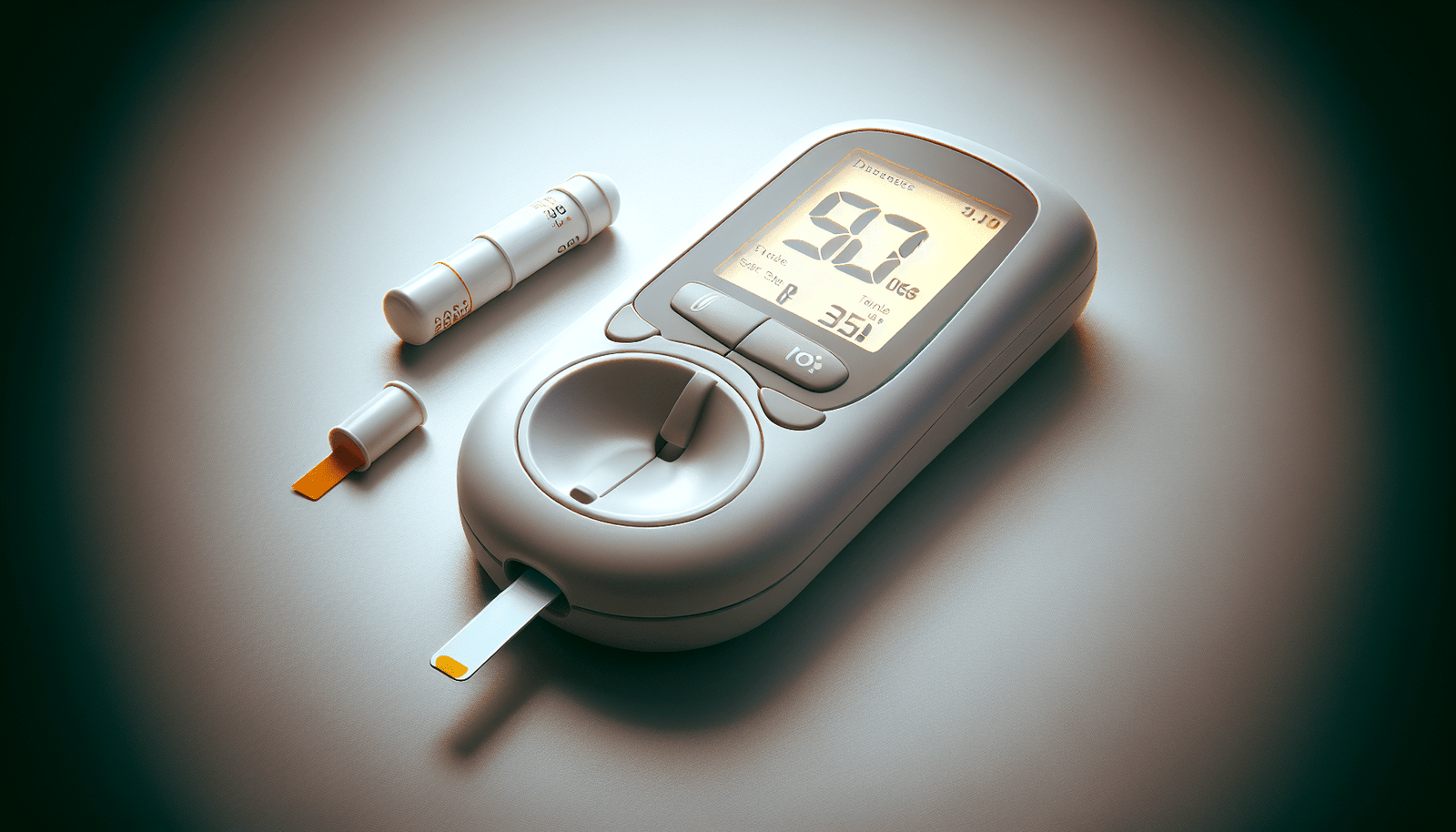Have you ever wondered how diabetes is classified and what each type really means for your health? In the vast landscape of diabetes, it can be a bit overwhelming to understand the nuances of the different types. This guide aims to clarify what each type entails and how they vary from one another, enabling you to gain a deeper understanding of this common condition.

Understanding Diabetes
Diabetes is a chronic medical condition characterized by high blood sugar levels. Your body usually regulates blood sugar through insulin, a hormone produced by the pancreas. When diabetes disrupts this function, it can lead to various complications that affect your overall well-being and quality of life.
The Role of Insulin
To comprehend diabetes better, you should know about insulin’s role. This hormone allows your cells to absorb glucose from the bloodstream and use it as energy. When you have diabetes, your body either does not produce adequate insulin or fails to use it effectively, leading to elevated sugar levels in your bloodstream.
The Main Types of Diabetes
There are mainly three types of diabetes: Type 1, Type 2, and gestational diabetes. Each type has its own set of characteristics, causes, and treatment options. Understanding these differences can help you better navigate your health or the health of someone close to you.
Type 1 Diabetes
Type 1 diabetes, often referred to as juvenile diabetes, usually manifests in children and young adults. However, it can occur at any age. In this type, your immune system mistakenly attacks and destroys insulin-producing cells in the pancreas.
Characteristics
- Insulin Dependency: Since your body cannot make insulin, you’ll require daily insulin injections or an insulin pump to manage blood sugar levels.
- Rapid Onset: Symptoms often appear suddenly, which can include increased thirst, frequent urination, fatigue, and blurred vision.
- Genetic Factors: Family history may play a role in developing Type 1 diabetes, although specific triggers are still being researched.
Type 2 Diabetes
Type 2 diabetes is the most common form of the disease, generally developing in adults, though it’s increasingly being diagnosed in children and adolescents. This type is primarily characterized by insulin resistance, where your cells do not respond well to insulin.
Characteristics
- Gradual Onset: Symptoms can develop more slowly and might be less noticeable initially. You may experience fatigue, increased hunger, or tingling sensations in the hands or feet.
- Lifestyle Factors: Being overweight, physically inactive, and having a diet high in processed foods can increase your risk of developing Type 2 diabetes.
- Possibility for Reversal: Unlike Type 1, some individuals can manage or even reverse Type 2 diabetes through lifestyle changes like diet and exercise.
Gestational Diabetes
Gestational diabetes occurs during pregnancy and usually resolves after childbirth. However, it can pose risks for both the mother and the baby.
Characteristics
- Hormonal Changes: During pregnancy, your body undergoes significant hormonal shifts that can affect insulin function.
- Screening Recommendations: Pregnant women are generally screened for gestational diabetes between the 24th and 28th weeks of pregnancy.
- Risk Factors: Factors such as obesity, family history of diabetes, and older maternal age can increase the likelihood of developing gestational diabetes.
Other Lesser-Known Types of Diabetes
Besides the primary types, there are several other forms of diabetes that are less common but still important to understand.
LADA (Latent Autoimmune Diabetes in Adults)
LADA is sometimes referred to as Type 1.5 diabetes because it shares features of both Type 1 and Type 2 diabetes.
Characteristics
- Adult Onset: Unlike Type 1 diabetes, LADA typically occurs in adults over the age of 30.
- Slow Progression: It may initially manifest as Type 2 diabetes, but over time, insulin production will decline, necessitating insulin therapy.
- Autoimmune Component: Like Type 1, it’s an autoimmune condition, meaning your immune system attacks insulin-producing cells.
Maturity Onset Diabetes of the Young (MODY)
MODY is a rare hereditary form of diabetes that occurs due to a change in a single gene.
Characteristics
- Genetic Factor: If one of your parents has MODY, you are at a higher risk of inheriting it.
- Variable Symptoms: Depending on the gene affected, symptoms and insulin requirements can vary widely among individuals.
- Management: Some forms of MODY can be managed without insulin or oral medications, while others may require insulin therapy.
Neonatal Diabetes
This type occurs in infants, usually before six months of age. Although rare, it can have significant effects on health.
Characteristics
- Genetic Mutations: Neonatal diabetes is often caused by a genetic mutation, affecting how your body processes glucose.
- Possible Remission: In some cases, infants might achieve remission, where they no longer require insulin.
- Long-Term Management: Some children may develop Type 1 diabetes later in life despite having neonatal diabetes.
Symptoms of Diabetes
Recognizing the symptoms of diabetes is crucial for early diagnosis and management. Here’s a closer look at the common signs across the different types of diabetes.
| Symptom | Type 1 Diabetes | Type 2 Diabetes | Gestational Diabetes |
|---|---|---|---|
| Increased thirst | Yes | Yes | Yes |
| Frequent urination | Yes | Yes | Yes |
| Extreme fatigue | Yes | Yes | Yes |
| Blurred vision | Yes | Yes | Less common |
| Slow wound healing | No | Yes | Less common |
| Unexplained weight loss | Yes | No | No |
Take note of any symptoms you may experience and consult a healthcare professional if you’re concerned.
Diagnosis of Diabetes
Diagnosing diabetes can be done through various tests, which help determine your blood sugar levels. Your healthcare provider may recommend one or more of the following:
Fasting Blood Sugar Test
This test measures your blood sugar levels after an overnight fast. A reading of 126 mg/dL (7.0 mmol/L) or higher indicates diabetes.
Oral Glucose Tolerance Test (OGTT)
For this test, you’ll fast overnight and consume a sugary beverage. Blood sugar levels are measured at two hours post-consumption. A reading of 200 mg/dL (11.1 mmol/L) or higher indicates diabetes.
Hemoglobin A1c Test
The A1c test provides an average blood sugar level over the past two to three months. An A1c of 6.5% or higher indicates diabetes.
Understanding your diagnosis can empower you to take the necessary steps toward effective management.
Managing Diabetes
Once diagnosed, managing diabetes is crucial for maintaining your overall health. The approach can vary based on the type of diabetes you have.
Type 1 Diabetes Management
- Insulin Therapy: You will need to administer insulin through injections or an insulin pump.
- Regular Monitoring: Checking your blood sugar levels regularly is necessary to adjust your insulin dosages.
- Diet: A balanced diet rich in whole foods, lean proteins, and healthy fats is essential.
Type 2 Diabetes Management
- Lifestyle Changes: Adopting a healthy diet and increasing physical activity can significantly impact your blood sugar levels.
- Medication: If lifestyle changes aren’t enough, your doctor may prescribe oral medications or insulin.
- Regular Check-ups: Frequent check-ups help monitor your condition and make necessary adjustments.
Gestational Diabetes Management
- Dietary Modifications: Following a nutrient-dense diet can help manage blood sugar.
- Blood Sugar Monitoring: Regularly checking blood sugar levels is essential for managing your condition effectively.
- Postpartum Follow-Up: After giving birth, you should continue monitoring your blood sugar levels, as you may still be at risk for developing Type 2 diabetes later in life.
Complications of Diabetes
If not managed well, diabetes can lead to serious complications that impact nearly every part of your body. Here are some potential complications:
Cardiovascular Issues
Diabetes significantly increases your risk of heart disease and stroke. High blood sugar can damage blood vessels and nerves that control your heart, increasing the likelihood of artery plaque buildup.
Neuropathy
High blood sugar can affect your nerves, leading to diabetic neuropathy. This might manifest as pain, tingling, or loss of sensation, typically in your feet.
Kidney Damage
Diabetes can lead to kidney damage or even kidney failure, as your kidneys work overtime to filter blood. Regular check-ups can help catch any signs of declining kidney function.
Eye Damage
Diabetic retinopathy is a condition that can lead to blindness over time. Regular eye exams are critical to monitor for any changes.
Foot Problems
Diabetes can cause poor circulation and nerve damage in your feet, increasing the risk of infections and foot ulcers.
Conclusion
Understanding the different types of diabetes and how they impact your health can empower you to take proactive steps in managing the condition. Whether you or a loved one is dealing with diabetes, knowledge is indeed power. Remember that with the right information, support, and management strategies, living a fulfilling life with diabetes is entirely possible. Take control of your health today!
